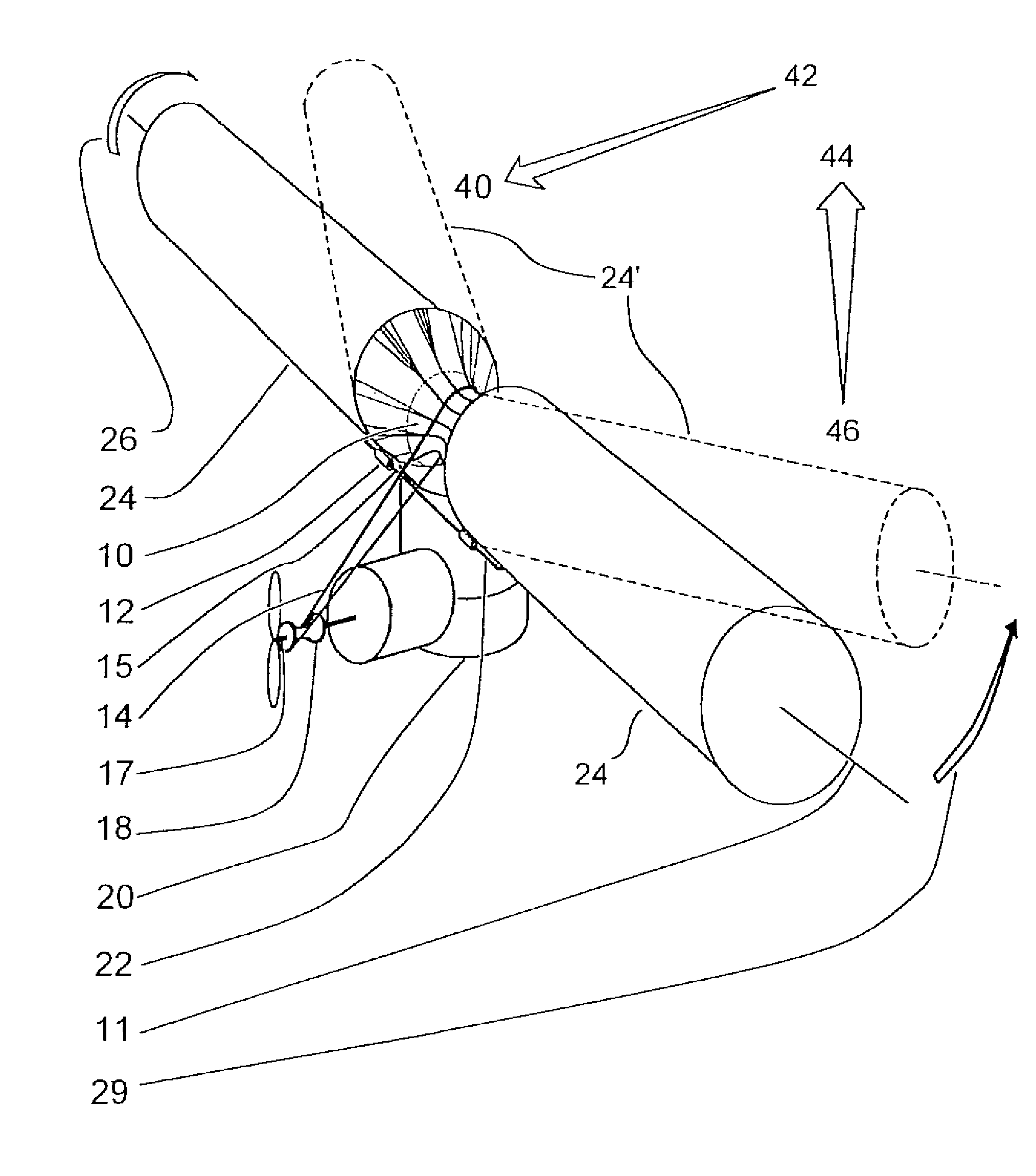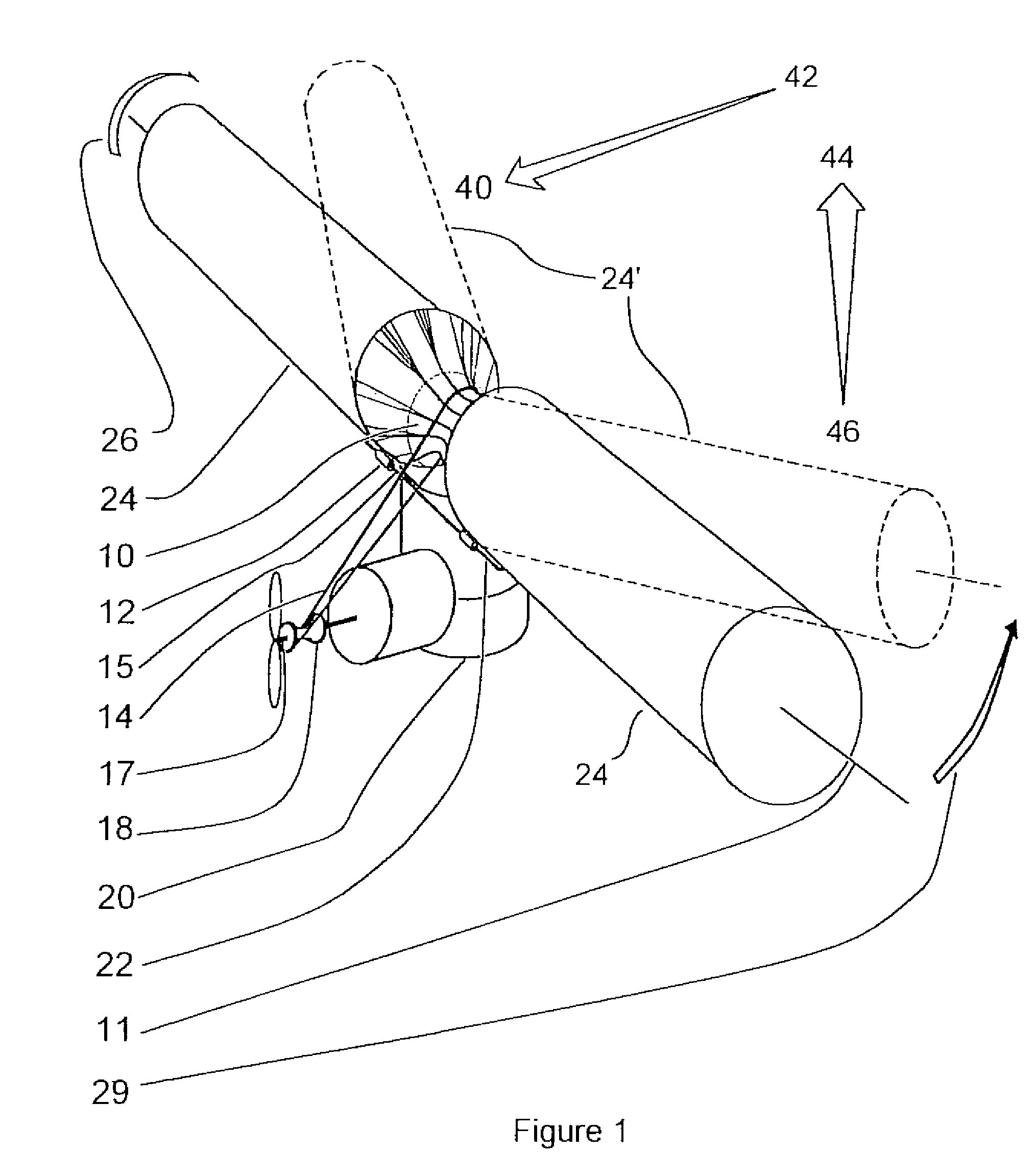Powered aircraft including inflatable and rotatable bodies exhibiting a circular cross-section perpendicular to its rotation axis and in order to generate a lift force
a technology of rotating body and rotating cross-section, which is applied in the direction of influencers using rotating members, transportation and packaging, sustainable transportation, etc., can solve the problems of low amount of lift force generation, no prediction of neutralizing reaction force, and poor fuel economy of current invention, so as to achieve easy and cheap shipping/handling, generate significant lift force, and keep or carry in a very small space
- Summary
- Abstract
- Description
- Claims
- Application Information
AI Technical Summary
Benefits of technology
Problems solved by technology
Method used
Image
Examples
Embodiment Construction
[0035]Referring now to FIGS. 1-10, several variants are illustrated of a powered aircraft 10 which is capable of creating a lift-generating force through the provision of a plurality of rotatably driven rollers and according to Magnus effect physical principles. In particular, the present invention discloses an improved lift-generating aircraft which overcomes many of the drawbacks associated with the prior art Magnus effect lift devices.
[0036]Referring to FIG. 1, a perspective illustration is shown of an arrangement of lift-generating components according to a first preferred embodiment of the present invention and which includes a pair of lift force producing rotating bodies (illustrated at 24 and as will be discussed in further detail), each exhibiting an elongated and crosswise extending circular cross-section through which extends a centerline and crosswise extending axis 11. As will be described in additional detail, the rotating cylindrical shaped bodies 24 are preferably con...
PUM
 Login to View More
Login to View More Abstract
Description
Claims
Application Information
 Login to View More
Login to View More - R&D
- Intellectual Property
- Life Sciences
- Materials
- Tech Scout
- Unparalleled Data Quality
- Higher Quality Content
- 60% Fewer Hallucinations
Browse by: Latest US Patents, China's latest patents, Technical Efficacy Thesaurus, Application Domain, Technology Topic, Popular Technical Reports.
© 2025 PatSnap. All rights reserved.Legal|Privacy policy|Modern Slavery Act Transparency Statement|Sitemap|About US| Contact US: help@patsnap.com



